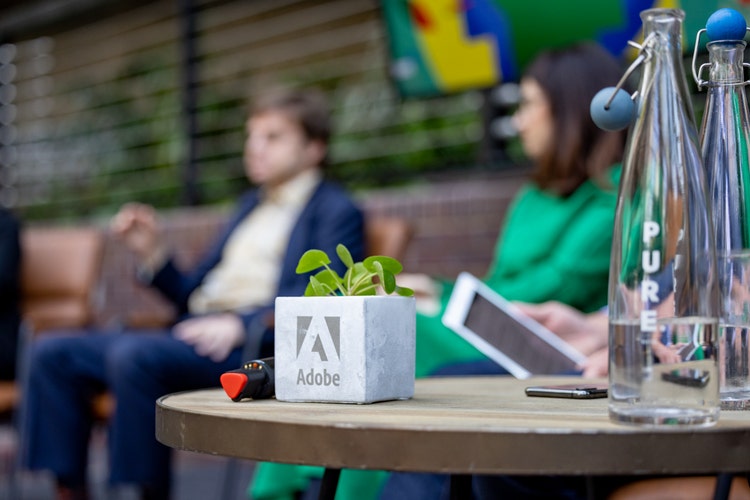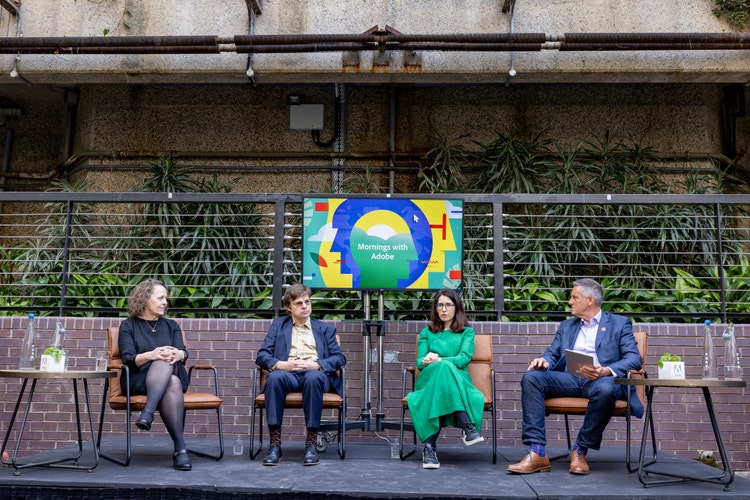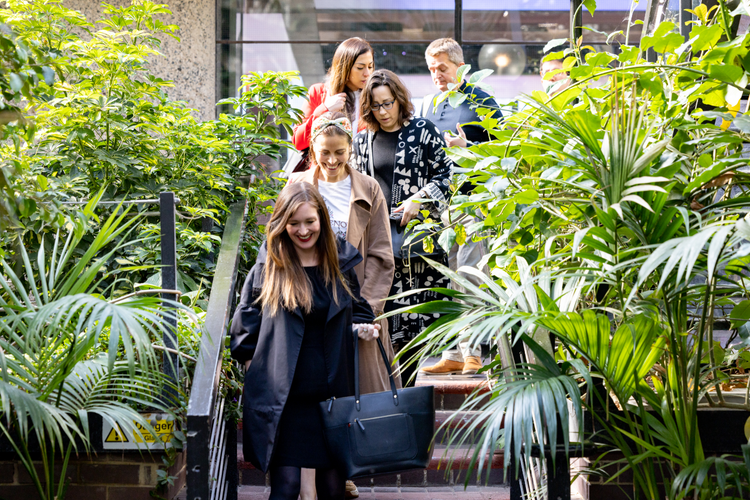Turning challenge into opportunity: Discussing net zero strategies at Mornings with Adobe

The path to net zero has gathered pace. Distant ambition has become tangible commitment, as businesses and governments realise the value of building a green economy, and the urgency has never been greater.
To commemorate the 52nd Earth Day, Adobe brought a panel of sustainability leaders together for the April edition of its Mornings with Adobe event, held at the Barbican Conservatory – one of the UK’s most proactively sustainable venues – to discuss the successes, challenges, and learnings from the net zero journey so far.

Education must come first
The first step towards net zero must be to improve sustainability literacy. Everyone must speak the same language, and that can only be achieved by dedicating time and resources to upskilling programmes and employee resource groups.
An individual’s understanding of sustainable practise can be split into two categories. First, the knowledge behind the challenge. This includes the science behind climate change, the current footprint of their business, and the goals to which it is working towards.
Then, perhaps more challengingly, is encouraging employees to think laterally about climate issues and turn challenge into opportunity. Every individual must appreciate how the work performed by environmental, social, and governance (ESG) teams is inter-connected to other pillars of organisational health and the society in which we live.
Adopting sustainability programmes such as Giki – now part of Adobe’s employee engagement strategy in the UK – can equip people with the knowledge and tools they need to make a difference. By upskilling an entire workforce, businesses can decentralise their climate leadership, remove silos, and create ambassadors across different departments and seniorities.

Convergence brings innovation
Employees can then start working towards a common goal. While collaboration is critical to the progress of any ambition, it is more important to mobilise people to move in the same direction than to get them working directly together.
Setting a common sustainability goal can light the flame of collective movement and push the boundaries of what is possible, such as Adobe’s “do more, together” approach. History tells us that it is the brands setting the most ambitious targets – Patagonia and Unilever were identified by the panel as key examples – that are producing the best innovation.
Then, the convergence of events, milestones, and break-throughs – from hearing global leaders discuss climate ambitions at COP26 to adopting a sustainable solution internally – generates positive reinforcement that strengthens employee advocacy for a sustainable mission and encourages them to take their own innovative efforts to the next level.

Sustainability through design
Sustainable innovation often means complex, high-budget solutions that require exceptional commitment and resources to deploy. While this can be true, considering how to achieve sustainability through design can achieve high-value results via more subtle, cost-efficient changes.
The way the climate change story has been told historically has been too complex, negative, and largely ineffective. As we navigate this turbulent communications landscape, brands can instead use their products and solutions to speak for them. By consistently placing sustainability at the core of its design blueprints, brands can say more about their commitment to the planet than words ever could. This was recently echoed at the Adobe Live for Business with Unilever session.
Emerging technologies are now making sustainable design easier than it has ever been. Both Cisco and IBM are now using digital twins to reduce the resource and energy consumption of their solutions by 80% or more, and 3D printing – which is supported across Adobe Creative Cloud and has been used to great effect by Coca Cola – can significantly reduce carbon in the prototyping process and enable local production.

Celebrate every win
On any journey requiring creativity and innovation, we must agitate the competitive streak in our peers and drive them to think bigger. It is critical to celebrate every win – no matter how great or small – and speak to the voice in the heads of colleagues or industry peers that says, “I can do better”.
The panel characterised hope as “the axe to break down the door in an emergency”. By cultivating shared positivity – and leveraging technologies to turn ideas to reality – businesses can improve their future and enable their employees to live a more meaningful present.
The most innovative solutions often grow from a seed buried at grass-roots level. We must mobilise our best minds to fertilise their ideas and bring them to life. The battle against climate change is a collective effort – between individuals, departments, companies, and industries – and we have a duty to drive each other on to innovate and digitalise in pursuit of a net zero economy.
To read more about how businesses are reducing their impact on the environment – and calculate your own environmental footprint – please read our Adobe Corporate Social Responsibility Report 2021 and visit our new Sustainability Hub.
Mornings with Adobe speakers: Mark Longstaff, account director, financial services, and UK sustainability advocate at Adobe; Charlotte Lythgoe, continual improvement manager of sustainability at Barbican Arts Centre; Hannah Harrison, director of sustainability at WPP; Michaela Wright, head of corporate responsibility at HSBC UK; and Dr Wayne Visser, fellow at the Cambridge Institute for Sustainability Leadership.